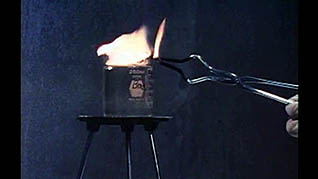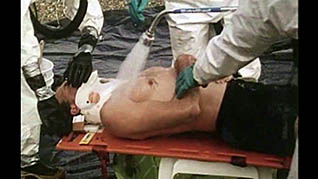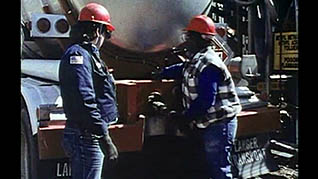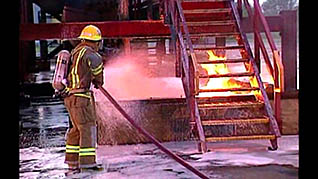Benzene, Toluene and Xylene
- Product ID
- efgrbtxy_vod
- Training Time ?
- 26 to 41 minutes
- Language(s)
- English
- Video Format
- Standard Definition Wide
- Required Plugins
- None
- Number of Lessons
- 18
- Quiz Questions
- 15
- Question Feedback
- Wrong Answer Remediation
- Lesson Bookmarking
- Downloadable Resources



The common use of Benzene, Toluene and Xylene in the modern workplace can lull workers into a sense of complacency when it comes to the possible hazards they pose. With this online training video, workers learn the unique properties and risks posed by Benzene, Toluene and Xylene, also known as aromatic hydrocarbons, and how to properly respond to those risks. All three of the “ring hydrocarbons” are flammable and give off toxic fumes.
Benzene, also known as benzol, carbon oil, coal naphtha, phenylhydride and pyrobenzol, is found in worksites producing substances such as insecticides, detergents, dyes, paints and synthetic materials. It is also has many other common uses such as a solvent for paint and varnishes and a fuel additive. Toluene, also known as methylbenzene, methyl benzol, phenylmethane and toluol, is used in aviation and high-octane fuels. Like Benzene, several manufacturing fields use toluene. And Xylene, also known as xylol or dimethylbenzene, is also used in fuels and manufacturing as well as solvents and household products like paints, varnishes and rust preventatives.
All three substances are clear colorless liquids which float on water and emit flammable vapors. To properly use these volatile materials, the video shows workers how to identify them through labels and their unique chemical properties, such as the thick black smoke created when the substance is ignited. The video explains the chemicals' hazards as toxic and cacogenic substances and how to address these threats through knowing the symptoms of exposure and the threats they pose to the environment.
Despite their prevalence and volatility, an active program of safety measures and protocols helps limit accidents involving aromatic hydrocarbons. A main part of these safety measures include proper storage measures within the workplace and proper training and equipment for workers.
With a case study of proper response procedures, and a focus on items such as monitoring devices, the training video shows how first responders need to react to spills of aromatic hydrocarbons. The video shows emergency responders the proper means for cleanup and disposal of spills as well as tactics to fight fires involving aromatic hydrocarbons. Use this Video On Demand to prepare emergency response crews and employees to prevent incidents and react appropriately to accidents involving Benzene, Toluene and Xylene.
![]() This course is in the Video On Demand format, to read about Video On Demand features click here.
This course is in the Video On Demand format, to read about Video On Demand features click here.

- Full-screen video presentation
- Print certificate and wallet card
- You have 30 days to complete the course
Emergency responders and the workers who use or transport Benzene, Toluene and Xylene
- Introduction
- Benzene
- Toluene
- Xylene
- Physical Properties
- Identification
- Health Hazards
- Exposure Symptoms
- Reactivity Hazards
- Safety
- Case Study
- Accident Response
- DOT Placards & Labels
- Monitoring Devices
- Spill Response
- Firefighting
- Clean-up & Decon
- Conclusion
© Mastery Technologies, Inc.




